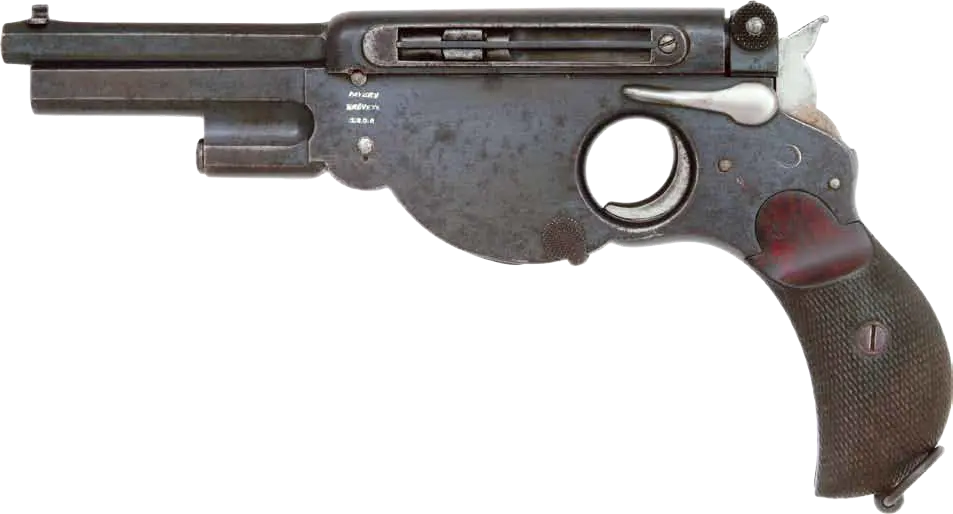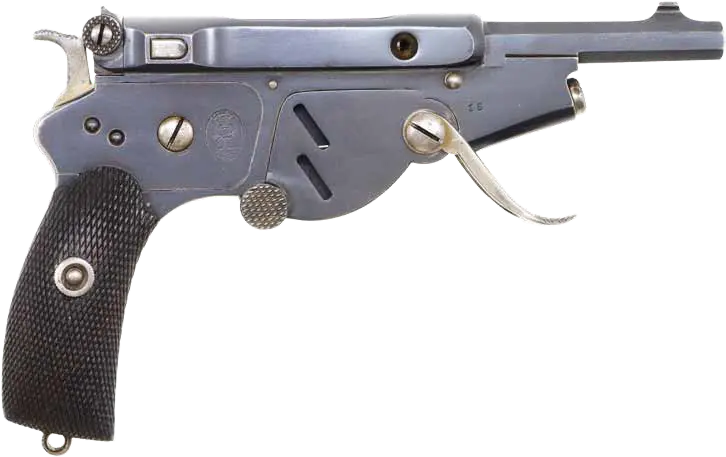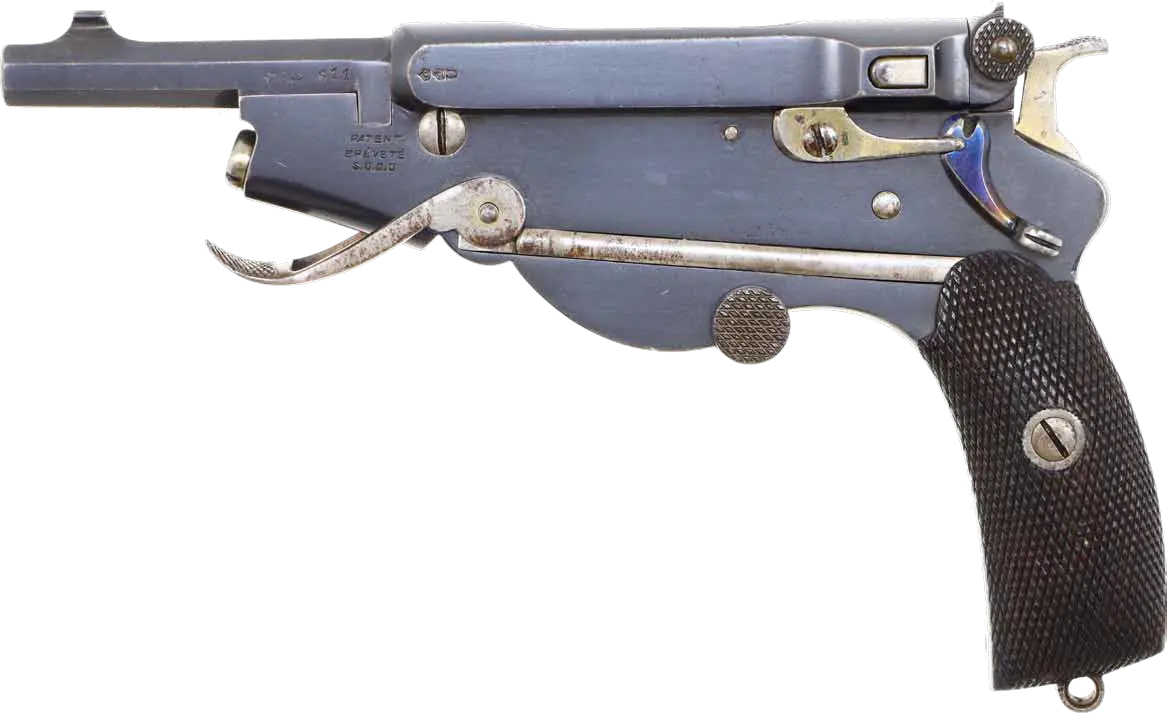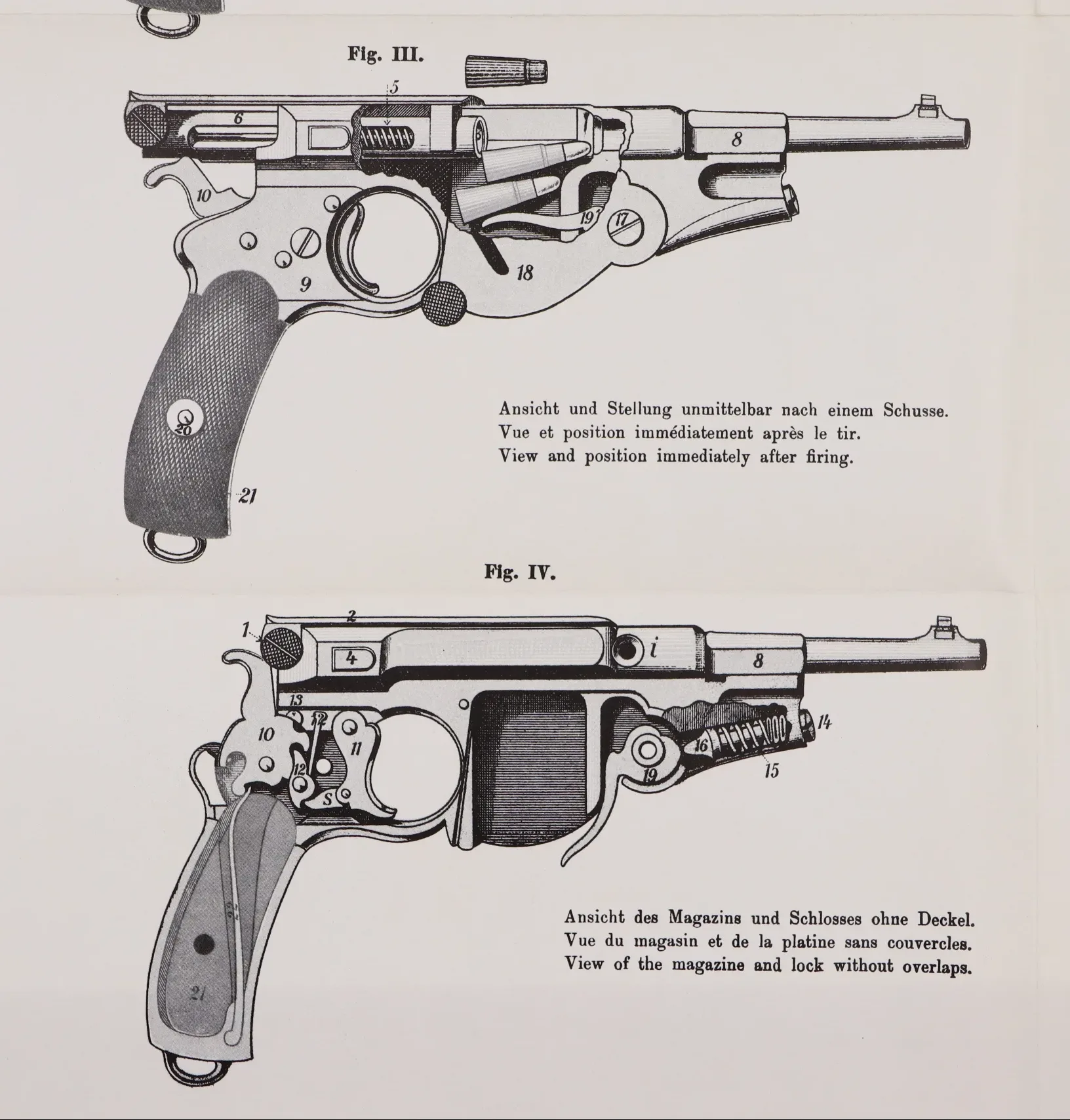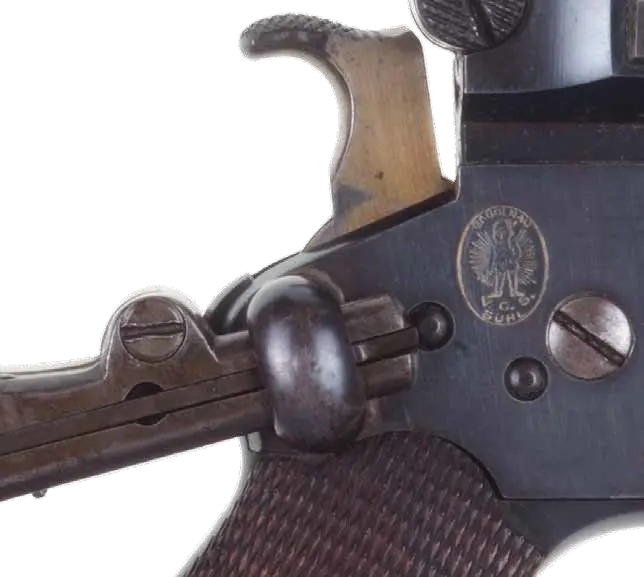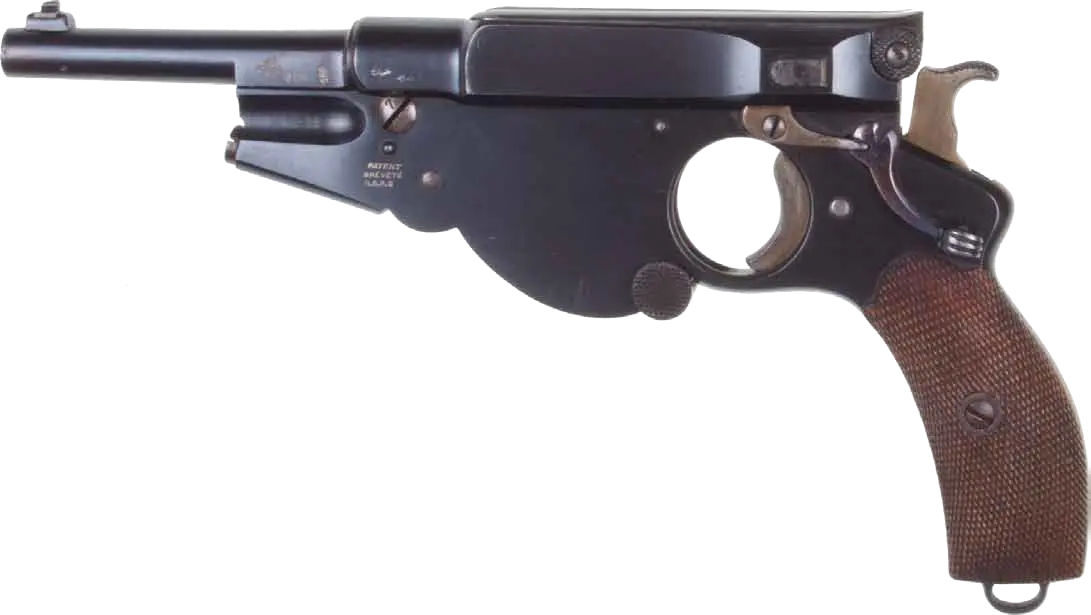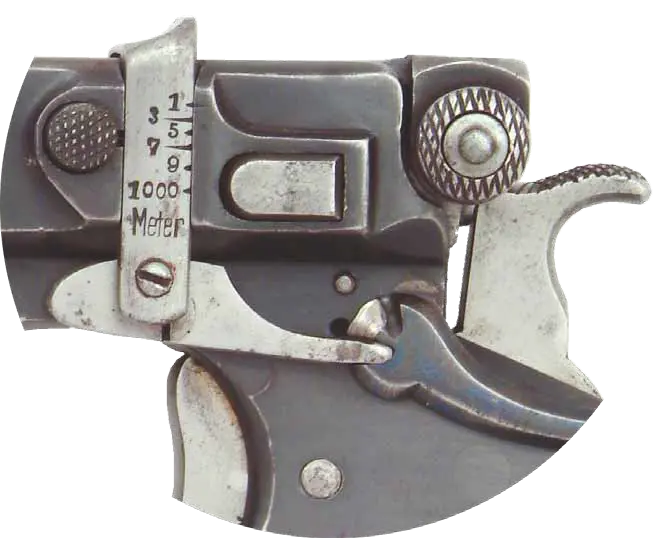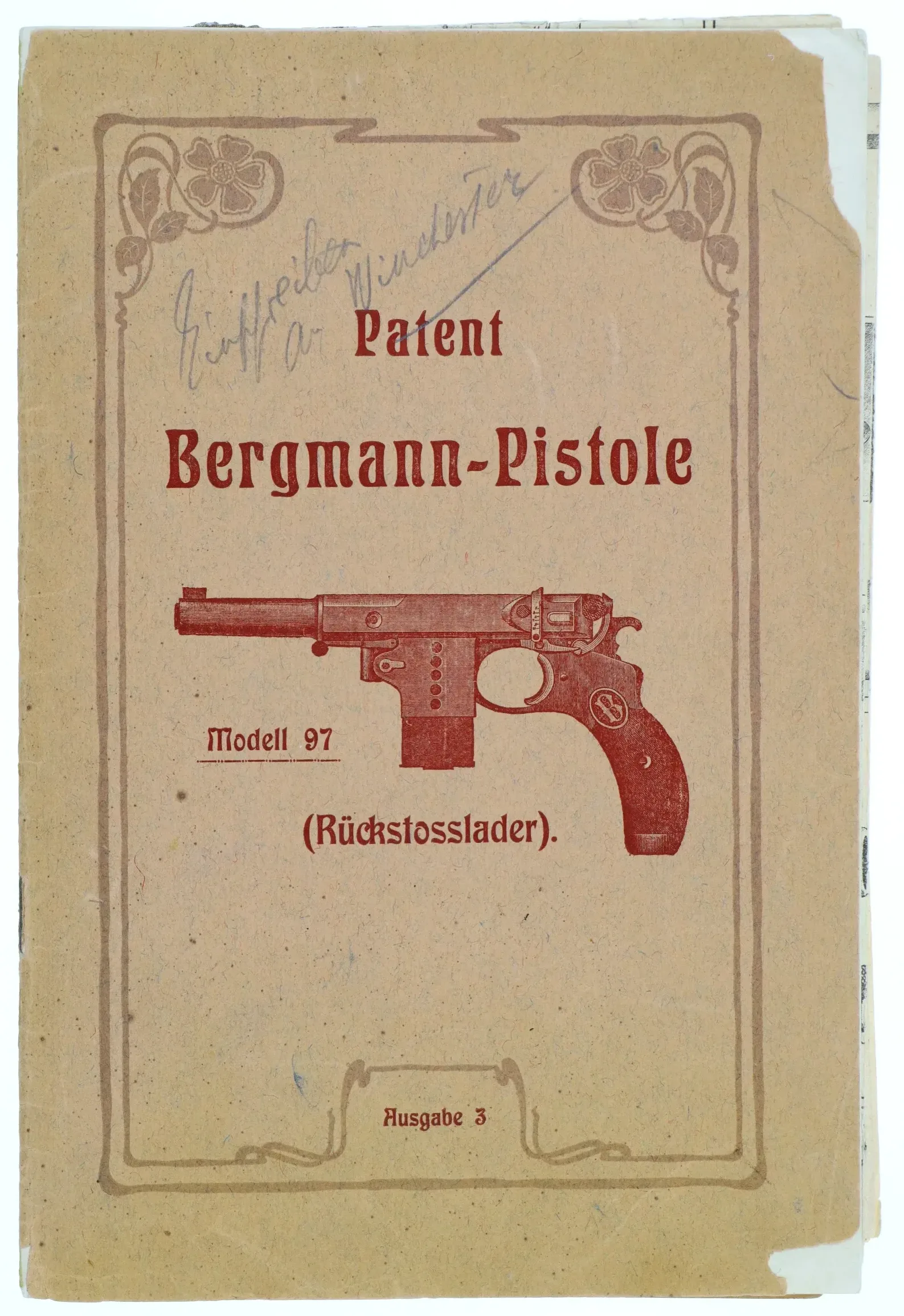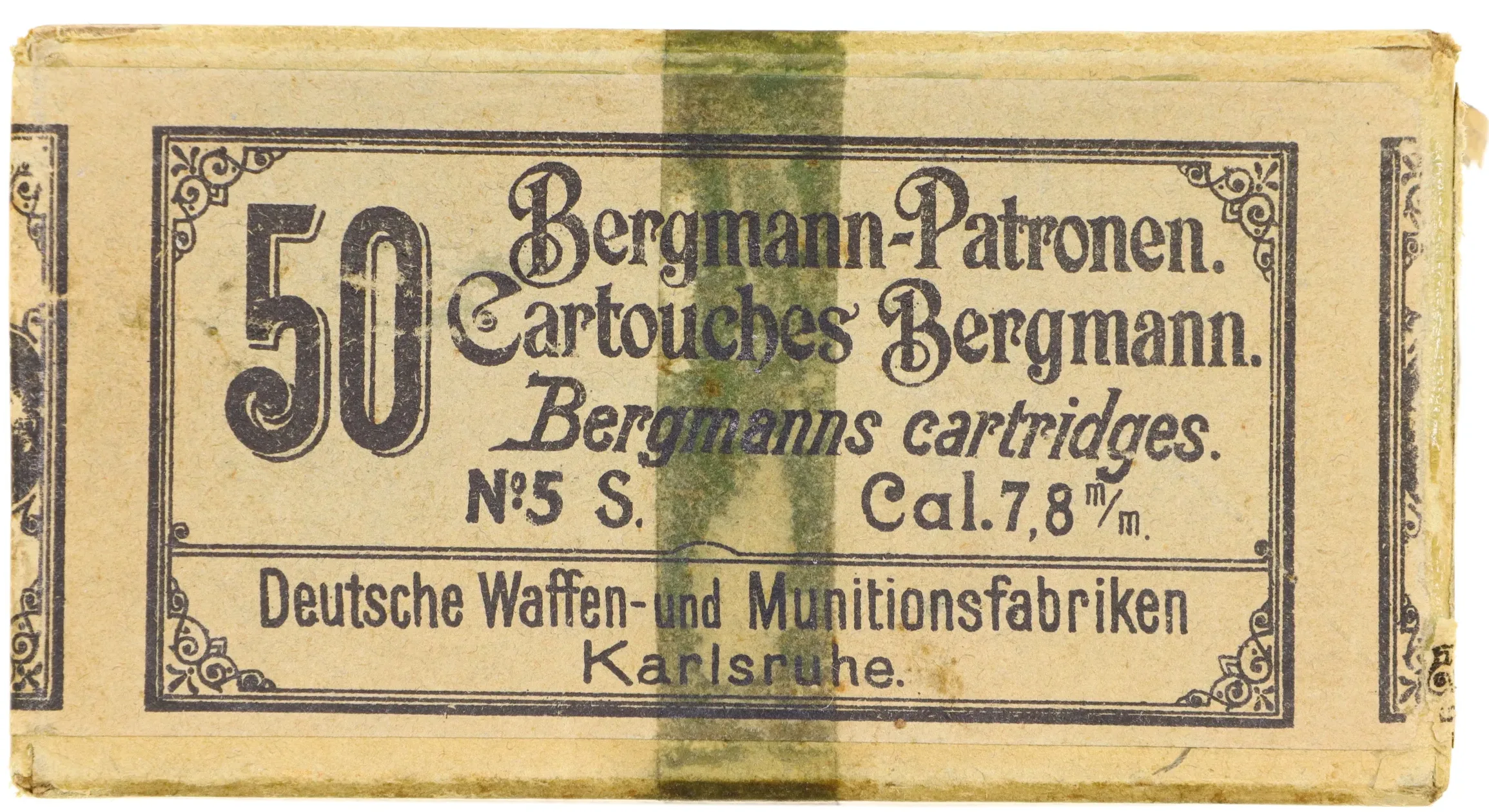Bergmann – First financially successful designs
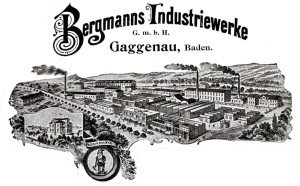 Theodor Bergmann was an industrialist and financier in Gaggenau, Germany. As an owner of an ironworks plant, he was constantly looking for manufacturing opportunities. It made no difference to him whether he made pots, lathes, bicycles or firearms. In the early 1890s the production of guns sounded intriguing to him—indeed lucrative—especially given the emerging field of semi-automatic arms. Enthusiastic at the prospect, Bergmann bought Otto Brauwetter’s patent for a semi-automatic pistol in 1893, handed the plans to his recently hired chief designer, Louis Schmeisser, and prepared to be a gun manufacturer.
Theodor Bergmann was an industrialist and financier in Gaggenau, Germany. As an owner of an ironworks plant, he was constantly looking for manufacturing opportunities. It made no difference to him whether he made pots, lathes, bicycles or firearms. In the early 1890s the production of guns sounded intriguing to him—indeed lucrative—especially given the emerging field of semi-automatic arms. Enthusiastic at the prospect, Bergmann bought Otto Brauwetter’s patent for a semi-automatic pistol in 1893, handed the plans to his recently hired chief designer, Louis Schmeisser, and prepared to be a gun manufacturer.
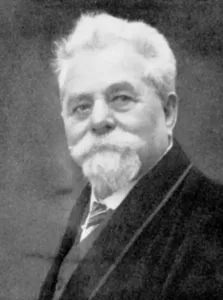 Model 1894, No. 1 or “Bergmann Schmeisser.” Although the original patent detailed a delayed-blowback action, Schmeisser simplified the action to introduce the Model 1 as a simple blowback. Today, the making of a blowback pistol would be pretty straightforward, but, in 1894, introducing any kind of semi-automatic pistol was cutting-edge technology. The Model 1 was a single-action gun with an external hammer, made in at least two chamberings: 5 mm and 8 mm (the majority). Mounted on the right side of the frame was a tensioned, pivoting plate to access the fixed magazine. Ammunition was loaded by individual rounds or with an en bloc clip. There was no clip release; once emptied, the clip fell out the bottom, similar to the Austrian Mannlicher Model 1886 or Italian Model 1891 Carcano rifles.
Model 1894, No. 1 or “Bergmann Schmeisser.” Although the original patent detailed a delayed-blowback action, Schmeisser simplified the action to introduce the Model 1 as a simple blowback. Today, the making of a blowback pistol would be pretty straightforward, but, in 1894, introducing any kind of semi-automatic pistol was cutting-edge technology. The Model 1 was a single-action gun with an external hammer, made in at least two chamberings: 5 mm and 8 mm (the majority). Mounted on the right side of the frame was a tensioned, pivoting plate to access the fixed magazine. Ammunition was loaded by individual rounds or with an en bloc clip. There was no clip release; once emptied, the clip fell out the bottom, similar to the Austrian Mannlicher Model 1886 or Italian Model 1891 Carcano rifles.

Bergmann depiction of 1894 model
These guns had other unusual features. For example, there was no firing-pin spring. The guns literally “rattled” when shook, as the positive firing pin floated freely within its channel. There was also no extractor, for the cartridges had a rimless, grooveless case that, when discharged, just blew out of the chamber. After all, who knew about extractors and grooved cases? That vision, pioneered by Borchardt, was largely a later development.
As a very limited production gun reflecting Bergmann’s first effort, virtually every pistol was slightly different. The loading plate on some No. 1s had a semi-circular ledge for the fingers to grasp, others had a pair of checkered buttons near the base. A few even had a cleaning rod mounted to the left side of the frame. When submitted to the 1897 Swiss trials, the Schmeissers tested poorly but, nonetheless, provided enough encouragement for Theodor Bergmann to persevere.
Model 1896: No. 2, No. 3, No. 4. Like the Schmeisser, these guns were single-action blowbacks with an external hammer and a free-floating firing pin. They loaded the same way as the Schmeisser and fed via the same type of clip. The No. 2 was the smallest and fired the 5 mm Bergmann cartridge. The earliest examples had a pocket-friendly folding trigger and an external trigger bar, though both were discarded by about Serial No. 500. Subsequent pistols had a conventional trigger and a fixed guard, a re-design that forced a slight elongation of the pistol. At the same time, an extractor was added to the bolt to match updated ammunition that was now made with a grooved, rimless case.
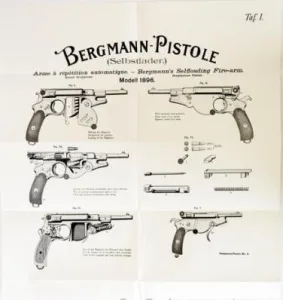
Bergmann 1896 advertisement
The Nos. 3 and 4 were full-size pistols, largely scaled-up versions of the No. 2, but with a sliding, top-mounted dustcover to protect the bolt; the No. 3 was in 6.5 mm, the No. 4 in 8 mm. Although Bergmann tried hard for a military contract, convincing any military in the 19th century to part with its beloved revolvers was a tough sell.
As had been true for the No. 2s, the earliest No. 3s were made without an extractor. After completing a few hundred pistols, the design and ammunition were updated to reflect the benefits of coupling an extractor with a grooved cartridge case. Most No. 3s were of the latter form, whose implementation also included a fuller, more comfortable grip.
The No. 4 was similar but had a stouter barrel, a more open magazine recess and a different caliber designation. Curiously, Bergmann marked the calibers of both the No. 3 and No. 4 with an English gauging system that referenced the number of lead balls, of bore diameter, that were needed to weigh one pound. The No. 3 was marked: 278. The No. 4, having a larger bore and needing fewer balls to weigh one pound, was marked 156/14 (the significance of “/14” is presently unknown).
Another curious marking on some of the guns related to a series of numbers, mostly single digits, stamped on many of the larger parts. These related to the sequence of disassembly. The first part to be removed was the cross pin in the back of the bolt that retained the firing pin, marked with number “1.” The second part to be removed was the dustcover, marked with number “2,” and so on.
As production ensued, Bergmann made further mechanical changes, especially to the No. 3. A few early guns had a hexagonal receiver and the front sight configuration was altered. Some barrels were threaded into the receiver, others had a lug that rotated into place. Guns could be had with unusually long barrels or with a special side plate with a fixed loop to accept a hollow, leather-wrapped shoulder stock. One of the rarest was a target version with a long octagonal barrel, fully adjustable sights and a set trigger. Kudos to Bergmann: The Model 1896 Target may have been the first semi-automatic target pistol!
Far more importantly, the Bergmann Model 1896 was arguably the first commercially successful semi-automatic pistol. Although the Borchardt Model 1893 is often so credited, Bergmann had already sold several thousand pistols while Borchardt’s sales, according to author Geoffrey Sturgess, were still in the hundreds. Books by Edward M. Ezell and Joseph J. Schroeder, Jr., suggest that Bergmann completed about 2,000 No. 2s, 4,000 No. 3s and 200-300 No. 4s.
Model 1897, No. 5. First double stack semi-automatic pistol. Indefatigable in his quest to garner a military contract, Bergmann developed a more powerful pistol. Far more robust and impressive than anything he had made to date, the locked-breech No. 5 was chambered for a bottlenecked 7.8 mm cartridge, similar in size and form to the 7.63 mm that Mauser had introduced just a year earlier. It also featured the first ever double stack magazine with a cartridge capacity of 10 rounds.
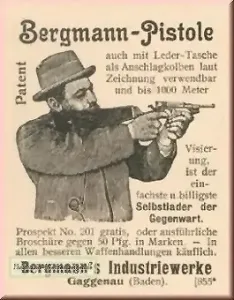
Bergmann ad with shoulder stock
The No. 5’s short-recoil system utilized a laterally pivoting bolt with two locking lugs on the left side, held in place by a large, flat spring mounted on the right side of the frame. Upon discharge, the bolt and barrel traveled as a unit rearward about 6 mm, whereupon a projection of the barrel extension cammed the bolt to the right, releasing it from the barrel extension to extract and eject the empty case. The bolt continued by momentum to the full-open position, compressing the recoil spring. The recoil spring then returned the bolt forward, stripping a new cartridge from the magazine, and relocked the bolt to the barrel as they moved into battery. Although the side-pivoting system was conceptually awkward by today’s norm, it nevertheless worked well and remained in effect throughout the No. 5’s production.
That was just one of several new developments. Standard-production No. 5s had a rear sight vertically adjustable from 100-1,000 meters, a barrel shroud as previously used in the Mannlicher Model 1894 and a detachable, double-stacked magazine whose indicator holes matched corresponding openings in the magazine well. All had a fixed tunnel at the bottom of the grip for attachment of a shoulder stock whose construction was similar to that of the Model 1896.
Features that had previously proven to be worthwhile were carried forward. In that regard, the Model 1897 had the same type of dustcover as the larger Model 1896s, the same type of single-action function, an identical safety that locked the hammer and disconnected the trigger, a gas-release hole in the left side of the chamber and similar disassembly.
The Swiss tested the Bergmann again in 1898, and the British in 1902, but neither country was interested. So Bergmann marketed the Model 1897 commercially. Most guns were of standard configuration; minor differences are noted in the bolt-tensioning spring and details of the shoulder stock. At some point, two carbine versions were offered. Pistol-carbines were pistols with a longer barrel/barrel shroud mated to a detachable, solid stock. A few Model 1897s were made as traditional carbines, most having some degree of engraving. All variations were numbered in the same sequential serial range, from 1 to 1000.
Video Introduction to Bergmann Pistols
Video Bergmann No. 1 Model 1894
Video Bergmann No. 2 Model 1896
Video Bergmann No. 3 1896
Video Bergmann No. 3 and No. 4 1896
Video Bergmann Transitional No 4/5
Video Bergmann No. 5 Model 1897
Video of Bergmann engraved pistols



